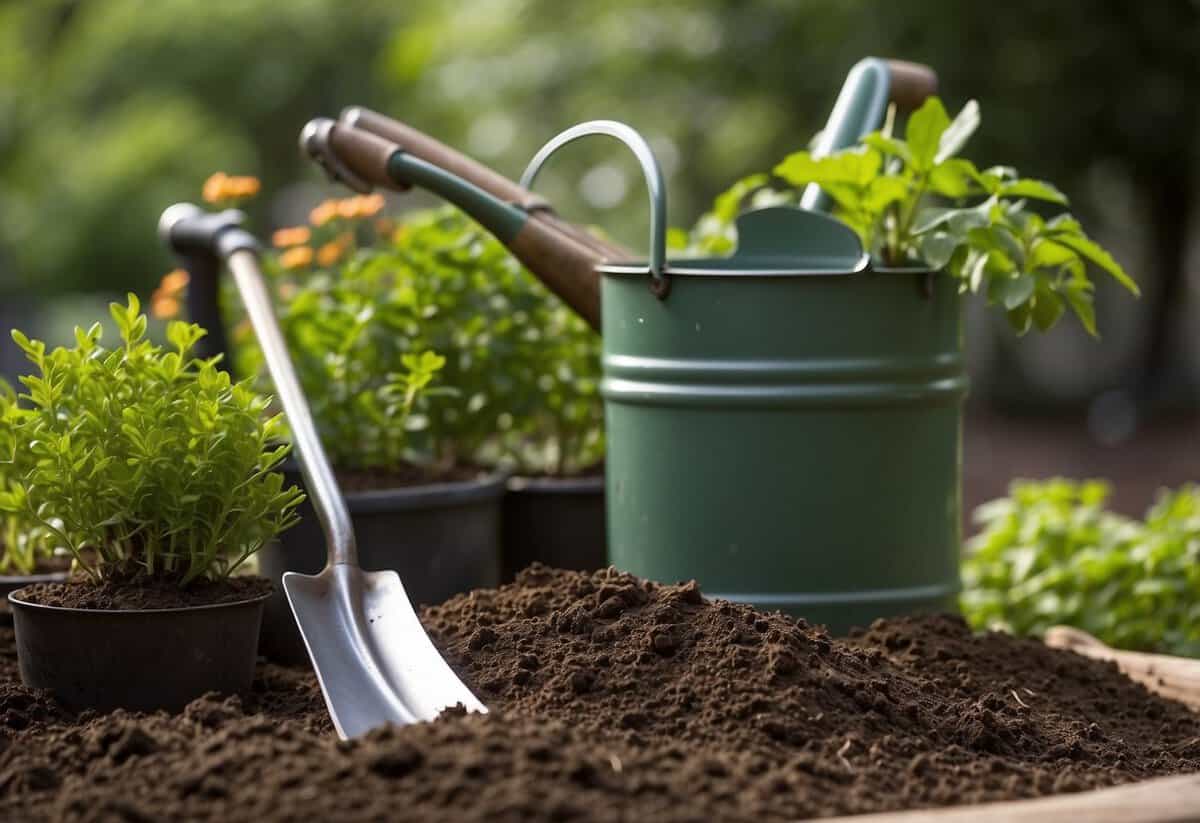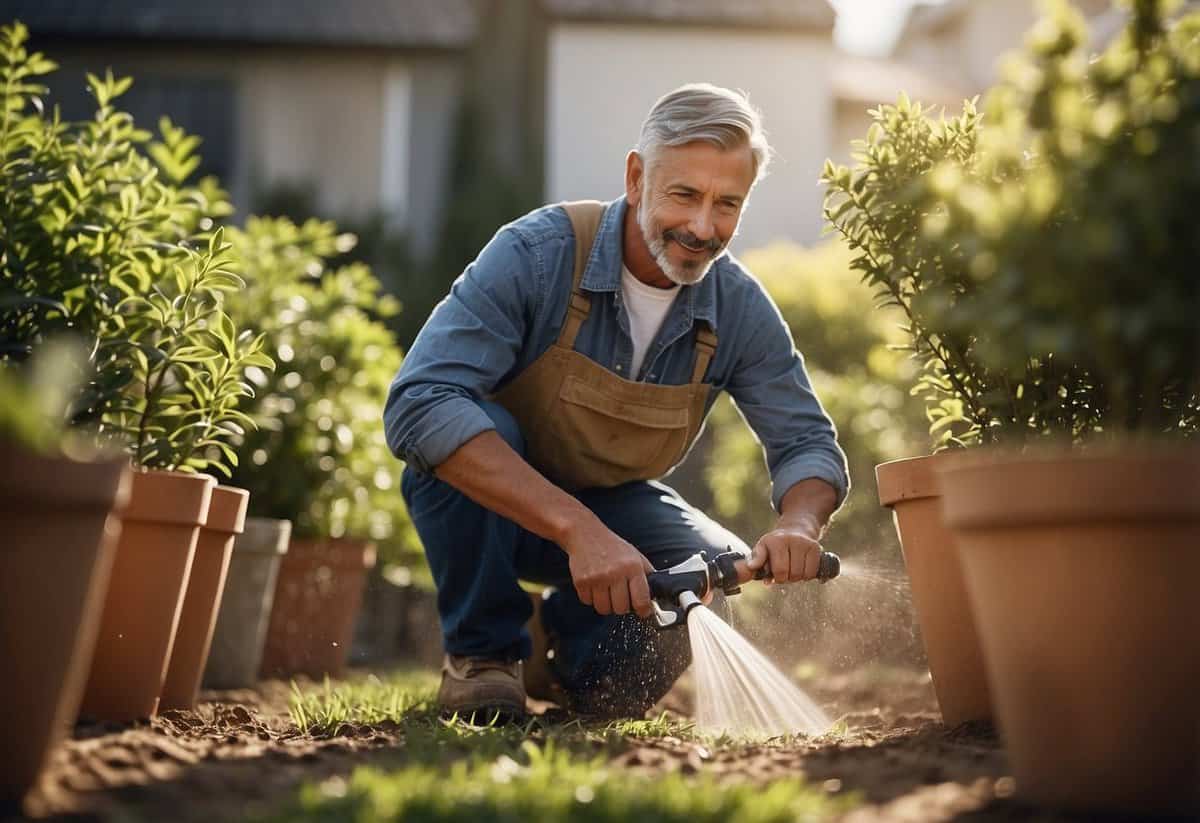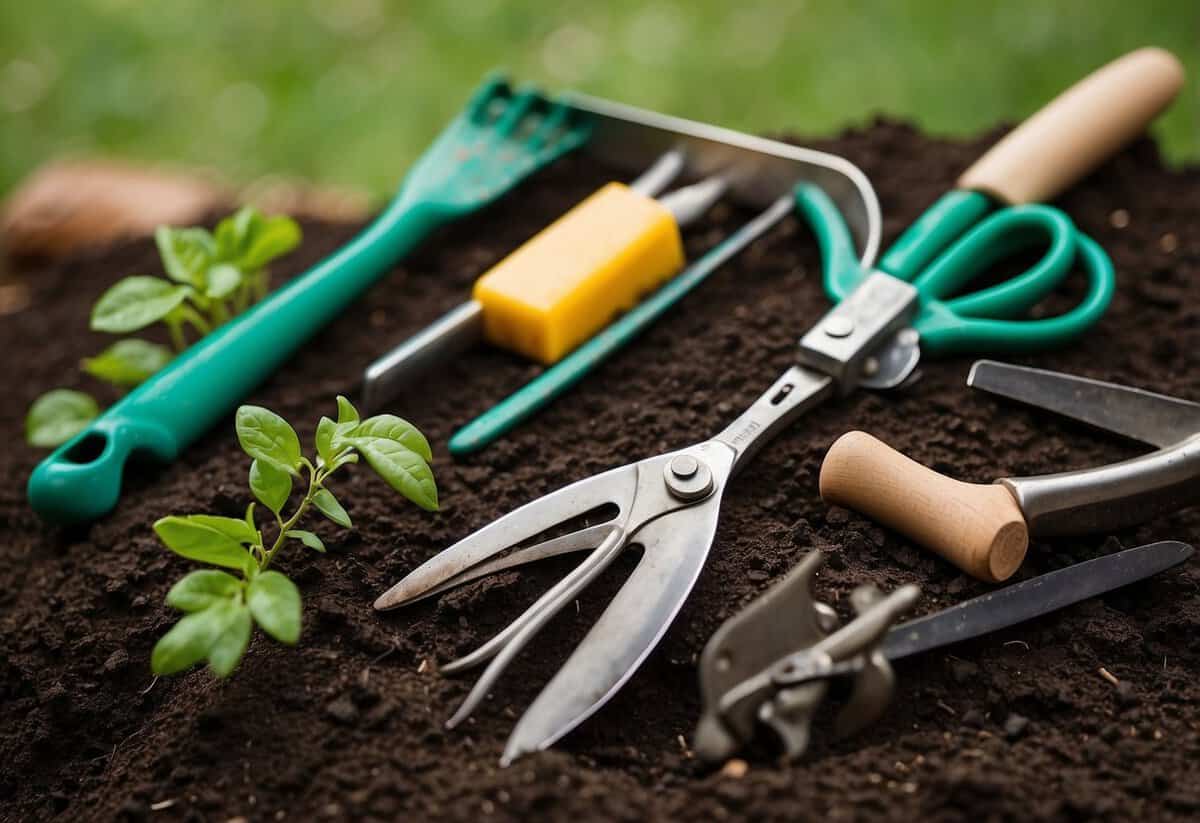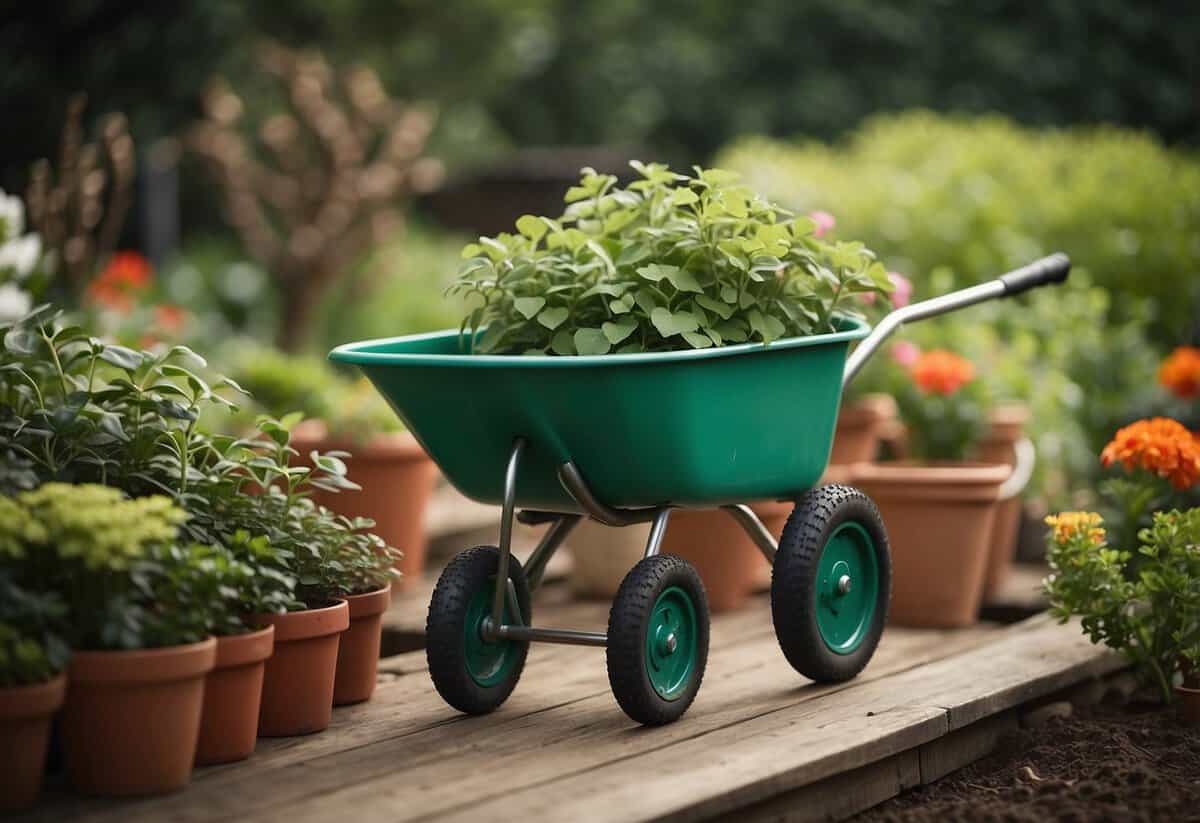What Equipment Does a Professional Gardener Need? Essential Tools and Tips
Gardening professionally requires more than just passion and knowledge; it demands the right set of tools to get the job done efficiently and effectively. For a professional gardener, having essential garden tools can make all the difference. You’ll need a sharp pair of pruners such as the Felco F-2, known for its durable and comfortable design. A reliable tiller and cultivator are also crucial for preparing soil, ensuring your plants have the best possible start.

Watering is another critical aspect of gardening that can’t be overlooked. A sturdy watering can or a versatile garden sprayer will help you keep your plants hydrated and healthy. Tools like a hand trowel and garden hoe are indispensable for planting and seed sowing. Don’t forget to bring along a trusted HydroFlask water bottle; staying hydrated is key to maintaining your energy levels throughout the day.
To make your garden truly flourish, effective weeding and cultivating tools are necessary. A hand weeder or a garden hoe helps in keeping those pesky weeds at bay. items like a garden fork and rake are needed for soil preparation and maintenance. Keep these tools handy, and you’re well on your way to becoming a successful professional gardener.
Fundamental Gardening Tools

Having the right tools can make your gardening tasks easier and more effective. Below, you’ll find the essential tools for soil cultivation, planting, and pruning that every professional gardener needs.
Soil Cultivation
Proper soil cultivation is key to a healthy garden. Spades and shovels are must-haves for digging and moving soil. A garden fork is perfect for breaking up clumps and aerating soil, ensuring roots can breathe and grow.
A garden hoe is another essential tool, helping you remove weeds and shape the soil. For finer work, a hand trowel is indispensable. It’s handy for digging small holes, transplanting seedlings, and removing weeds with precision.
More robust tools like rakes help in leveling soil and collecting leaves and debris, making your garden tidy and well-prepared for planting.
Planting Essentials
When it comes to planting, the right tools can simplify your work and make planting more precise. A hand trowel is crucial for this task. It allows you to dig small holes for seeds and plants with ease.
A garden hoe also plays a role in planting by helping you create rows for sowing seeds. Using a garden fork can make mixing compost into your soil easier, enriching it for better plant growth.
Spades and shovels come in handy for larger planting jobs, like digging bigger holes for shrubs or trees. They provide the strength and efficiency needed for more demanding tasks.
Pruning and Trimming
Pruning and trimming are necessary to keep your plants healthy and looking their best. Bypass pruners are essential for cutting stems and small branches, providing clean cuts that help plants heal quickly.
For thicker branches, having loppers in your toolkit is beneficial. They offer more leverage and cutting power, making it easier to trim larger branches without damaging the plant.
Hedge shears are great for shaping hedges and bushes, allowing for more precise and even cuts. They help maintain the desired shape and size of your plants.
Using these fundamental tools will help you keep your garden well-maintained and thriving.
Watering and Irrigation

Proper watering and irrigation are crucial for a professional gardener. You need the right tools to ensure every plant gets the right amount of water.
Hoses and Accessories
Using a quality garden hose can make your watering tasks much easier. Look for hoses that are flexible, durable, and kink-resistant. Adjustable nozzles are essential. They allow you to control the water flow and pressure, which helps you water different plants in the garden with precision.
Another useful tool is a soaker hose. These hoses release water directly to the soil, reducing evaporation and delivering moisture right to the roots. They are perfect for garden beds and new plantings. For larger gardens, consider setting up a drip irrigation system. These systems save water and target specific plants, reducing waste. Hold-down stakes can help secure hoses and drip lines in place, ensuring consistent watering.
Cans and Wands
Watering cans are essential for smaller gardens and potted plants. Choose a can with a capacity that fits your needs, usually between 1-2 gallons. A can with a long spout helps you reach plants easily and directs water precisely where needed. Watering wands are another useful tool. They attach to a garden hose and allow you to water hard-to-reach areas without bending or stretching.
Look for wands with adjustable flow settings. This feature helps you avoid over-watering delicate plants. Some wands come with different spray patterns, allowing you to switch from a gentle mist to a stronger flow. This flexibility is especially useful when you need to water both young seedlings and established plants.
Maintenance and Safety Equipment

When working as a professional gardener, having the right maintenance and safety equipment is crucial. Items like protective wear can prevent injuries, and proper tool maintenance ensures your equipment remains in excellent working condition.
Protective Wear
Using protective wear is important to keep you safe while working. Gloves are one of the most essential items. They protect your hands from thorns, chemicals, and dirt. Look for gloves that are durable yet flexible, allowing you to handle tasks with ease.
Boots are another must-have. They protect your feet from sharp objects and provide good traction, helping you avoid slips and falls. Waterproof boots are ideal since gardening often involves wet conditions.
Knee pads are helpful when you need to kneel for planting or weeding. They cushion your knees and prevent injuries from hard or uneven ground. Think about choosing knee pads with adjustable straps for a more secure fit.
Tool Maintenance
Maintaining your gardening tools extends their lifespan and ensures they work efficiently. Cleaning your tools after each use is a simple yet effective step. Remove dirt and debris using a brush or rag, and make sure to dry them thoroughly to prevent rust.
Sharpening tools like pruners, shears, and lawn mower blades is essential. Sharp tools make clean cuts, reducing plant damage and making your job easier. Use a sharpening stone or a file regularly to keep blades in top shape.
Aside from sharpening, you should also regularly inspect your tools for any damage. This includes checking for loose handles, rust, or cracks. Fixing small issues as they arise helps avoid bigger problems and keeps your tools safe to use.
Routine oiling of metal parts can prevent rust and keep the tools moving smoothly. Use a light machine oil, and apply it with a cloth to any metal surfaces after cleaning.
Specialized Gardening Tools

Professional gardeners use a range of specialized tools to tackle specific tasks. These tools make advanced plant care easier and ensure that lawns and larger areas are well-maintained.
Advanced Plant Care
When it comes to advanced plant care, tools like secateurs, pruning shears, loppers, and a pruning saw are essential. These tools help you to precisely trim and shape your plants.
Secateurs are perfect for small-scale cutting jobs, like trimming flower stems. They are compact and easy to handle, making them ideal for detailed work. Pruning shears, on the other hand, are stronger and can handle thicker branches.
Loppers are designed for cutting thicker branches that are out of reach. They feature long handles for extra leverage. When a branch is too thick for secateurs or shears, a pruning saw becomes necessary. It can cut through large branches easily and efficiently, allowing you to shape trees or large shrubs.
Each tool serves a unique purpose and is designed to enhance your gardening efficiency.
Lawn and Large Area Tools
Maintaining lawns and large areas requires more robust equipment. A lawn mower is a staple for keeping your grass at the desired height. Modern mowers come in a variety of types, including gas-powered and electric, ensuring you have options based on your lawn size and environmental concerns.
A string trimmer helps you reach areas that mowers can’t, like edges and corners. It’s lightweight and perfect for detailed trimming. To handle garden debris, a leaf blower is extremely useful. It quickly clears leaves and other lightweight debris from your lawn, making the area neat and tidy.
Using the right tools ensures that larger tasks are managed efficiently, saving you time and effort.
Garden Management and Organization

Managing a garden effectively requires the right tools and a good sense of organization. Proper transportation and storage of equipment, as well as attention to environmental factors, are essential.
Transportation and Storage
Transporting and storing your garden tools properly can make your gardening tasks easier and more enjoyable. A wheelbarrow is useful for moving heavy items like soil, mulch, and plants around your garden. For lighter loads, a garden cart can be very handy.
Keep your tools in a dry, secure place to prevent rust and damage. Shelving units or tool racks can help organize your tools so you can find what you need quickly. It’s also good to label storage bins for smaller items like gloves and pruners. Having a designated space for each tool reduces clutter and prolongs their lifespan.
Environmental Considerations
When managing your garden, consider the impact of your activities on the environment. Using organic fertilizers helps improve soil health without harmful chemicals. Mulch not only enriches the soil but also helps retain moisture and reduce weed growth, contributing to a healthier garden ecosystem.
Be mindful of water usage; consider installing a rain barrel to collect water for your plants. Choose native plants that are adapted to your local climate as they generally require less water and are more resistant to pests. By paying careful attention to these environmental factors, you can create a sustainable and productive garden.







